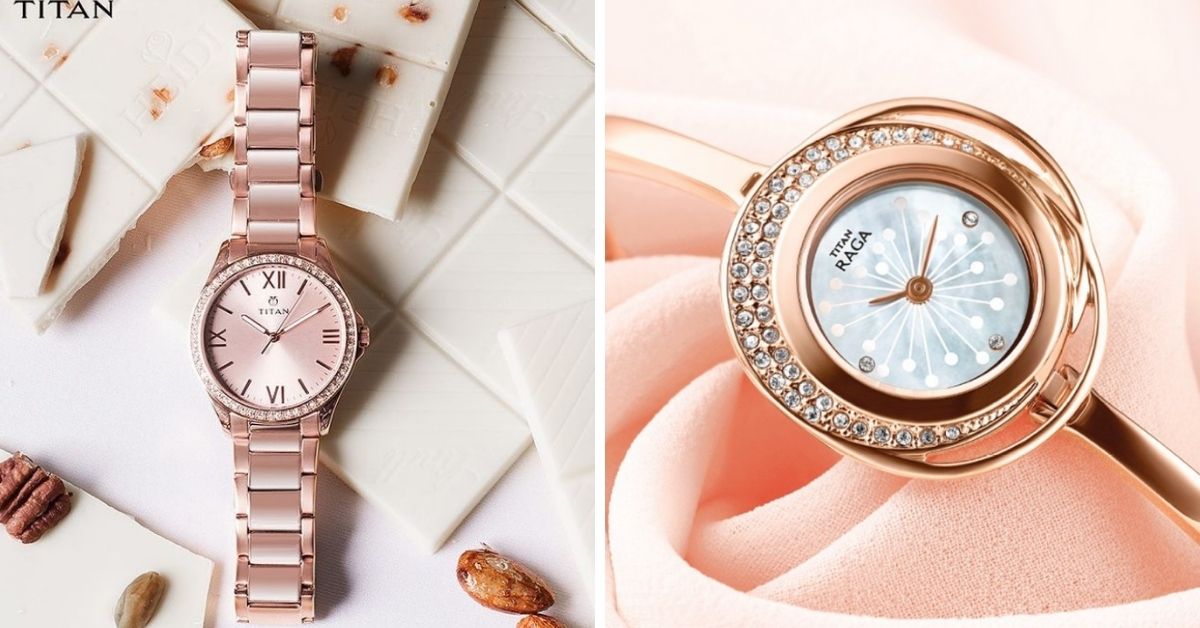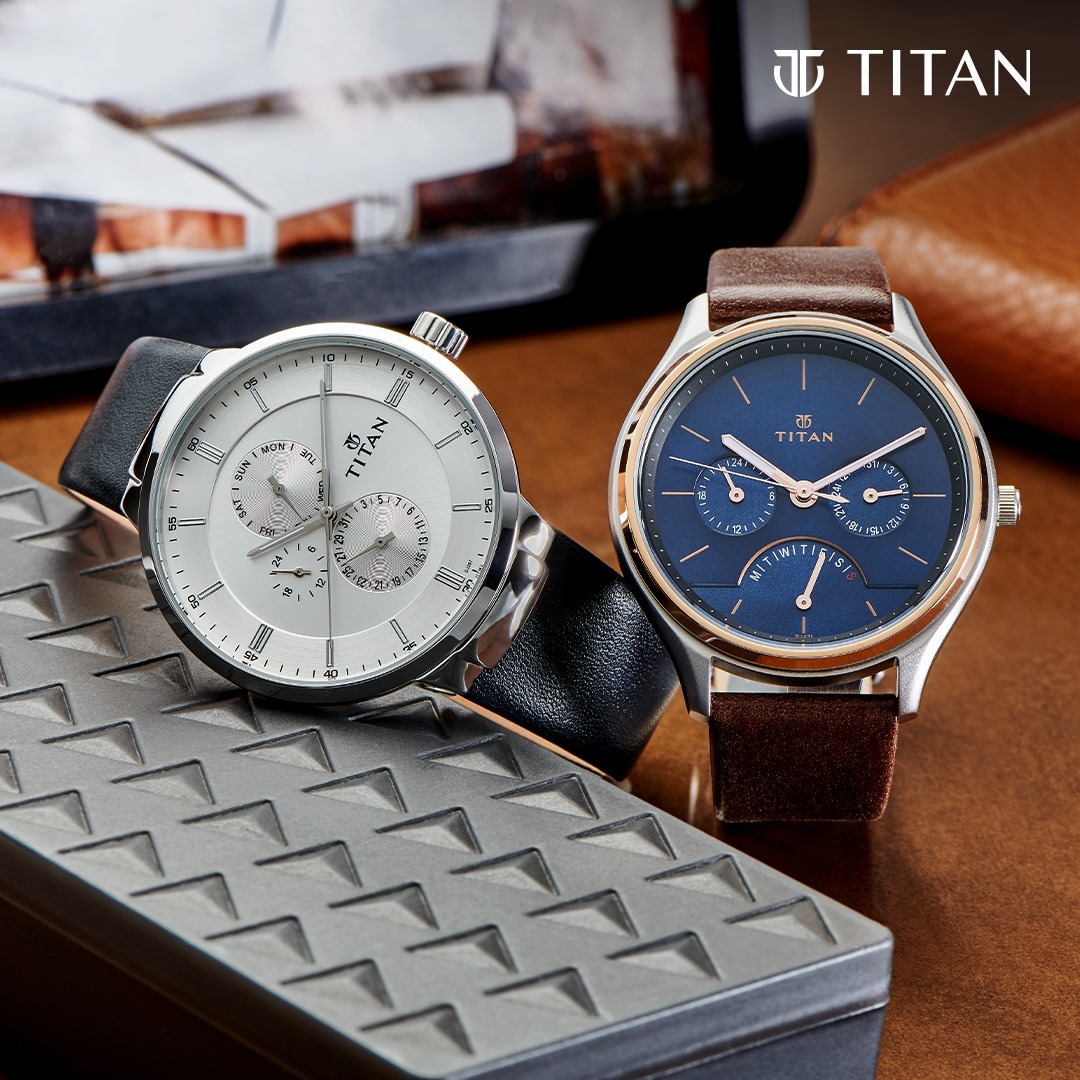At first, it looks like any other commercial, with the prankish humour of college students trying to disrupt a lecture, tapping on benches and clicking away on their calculators. But as soon as the noise snowballs into Mozart’s Symphony No. 25, you know what you’re in for. You know the tune by heart, and you might even catch yourself tearing up.
A student walks up to the professor (played by veteran actor Avijit Dutt) and gives him a book with ‘farewell’ inked on it. The look of confusion on the professor’s face is replaced with a smile as he opens the book to find a collage. He can’t help but hold back his tears when he sees a Titan watch with black leather straps on the following page.
There are no dialogues, in-your-face shots of the watch, or dramatic voice overs telling you why you should buy it. The advertisement effortlessly and beautifully encapsulates the legacy of the iconic brand Titan, and the emotions behind its ‘Joy of Gifting’ campaign.
The ad, created by Ogilvy and Mather (O&M) in 2013, aptly sums up the original narrative of gifting Titan watches that was unleashed back in the 1980s. Back then, HMT watches had a monopoly on wrist watches, and you had to place your order months in advance. Another option was to turn to NRI relatives for this prized possession.
But Titan’s entry turned things around.
Established in 1984 and launched in 1987 under the joint partnership of Tata Industries and TIDCO (Tamil Nadu Industrial Development Corporation), Titan dismantled the habit of waiting by offering a variety of quartz watches, and mind you, not mechanical. The brand also labelled the watches as valuable. The only difference was that now they were easily accessible and affordable as a gifting option for the common man.
“I wore several watches for kids when I was younger, but when someone asks me about my first one, those are not the ones I tell them about. I tell them it was a Titan watch, with a brown leather strap and a silver dial that shone like a polished coin on my wrist. I got the little beauty as a gift from my father when I turned 16. It was tradition in my family to get a Titan watch on your 16th birthday, and I had desperately waited for my turn to visit the Titan store after seeing my elder sister get one. I would rub it for good luck before every exam. It’s a memory that returns every time I listen to Titan’s signature tune,” says Himachal Pradesh-based Sanchari Pal.

On 23 December 1987, Titan opened its first showroom in Safina Plaza, Bengaluru. Hundreds turned up with newspaper cuttings of the Titan catalogue. By 2018, the watchmakers had 1,000 stores across India.
Titan is arguably India’s most loved brand, which managed to win consumers from the word go, has maintained quality over the years, caters to all demographics, while constantly pushing the envelope in the world of product innovation.
“A combination of factors worked in making Titan synonymous with credibility and trust,” Suparna Mitra, CEO of the Watches and Wearables Division of Titan Company Limited, tells The Better India.
“To begin with, Xerxes Desai (the first Titan CEO) foresaw the future of quartz taking over mechanical watches. He was a man of style and elegance, so he designed fashionable watches, something that was missing in India. Our exclusive brand outlet assured consumers that we are here to serve them even post sale. The company focussed on shaping the brand as premium with international designs, but being mindful of the bulk consumers having budget-constraints. Among the first cluster of five watches, the price range was between Rs 350 and Rs 900. Titan’s signature melody is the cherry on top,” she says.

Suparna takes us through the heartwarming journey of Titan, which started from Hosur, a small town in Tamil Nadu, with a few villagers.
A lesser-told story
Desai had worked with the TATA group for two decades when he was assigned the task of setting up a wrist watch brand. An alumnus of Oxford University, Desai took Jamsetji Tata’s philosophy of community growth seriously, and set up the first factory in a lesser-known region just like Jamshedpur. Hosur was chosen as it is just 40 kilometres away from Bengaluru, where HMT was located.
“Titan made a commitment of generating employment to the Tamil Nadu Government in 1984. After three years of research, conceptualising designs and rigorous training, our first batchmakers were ready. Today, 1,600 people work in the manufacturing segment across five factories,” says Suparna.
There is a lesser known story behind how the villagers were selected. It goes like this.
Desai and his team were disappointed due to the lack of skilled workers, so they took it upon themselves to find the right talent.
The team visited schools and colleges and chose candidates who were aged 17 and above. These candidates had to take a test, and based on the results, they were filtered again. Titan even went to the extent of giving them housing and foster parents if the candidates were required to relocate. As for these candidates, what started as a compulsion to earn gradually turned into a matter of pride. Today, hundreds of families have found careers in Hosur. Their children have settled abroad, entered medicine, and more.
The village, which had never heard of the Tatas or even remotely knew how battery-operated watches worked, was now making dazzling watches with varied features like gold plated dials with leather straps, steel and gold straps, and gold plated bracelets. Suparna says Desai’s insistence on detailed-to-perfection work also helped the watchmakers work harder and bring the flawless designs to life.
It also does not come as a surprise to many that Desai’s taste in western classical music and Suresh Malik’s (former head of O&M) fondness for music gave birth to Titan’s unforgettable melody. Interestingly, Malik was also the creator behind Mile Sur Mera Tumhara.
But the makers thought that merely launching sophisticated watches with kickass advertisements is not enough, considering that people perceive this as a one-time investment if not more. So they heavily invested their time and resources in developing new watches year after year, with irresistible and purposeful features. This was concretised with multi-brand retailing, aggressive collaborations with the outlets, and fragmenting into new sub-brands such as Fastrack, Sonata, Tanishq, Titan Eye Plus and Taneira.
As time moves forward

Titan is known to keep up with the latest trends and innovations, not just in the domestic sector, but also internationally. Taking a leaf out of the book of various global watchmakers including the French, Japanese, and Swiss, the brand tries to incorporate never-seen-before components while customising it to suit the domestic audience. This strategy was pursued more aggressively after liberalisation, as global players like FCUK, Fossil, and Tommy Hilfiger came in.
The demand for adding new features, says Suparna, comes from both the consumers and employers. For example, the idea of creating the slimmest watch came from an “internal impulse”.
“Titan Edge was introduced in 2002. The dials are thinner than the straps. The analog watches are lightweight and come in various shapes like round, rectangular and dual dials. Following the overwhelming success, we recently introduced the ‘edge mechanical’, the slimmest mechanical watch,” says Suparna.
Like Edge, Fastrack was another sub-brand that was updated and relaunched. First established in 1998, Fastrack was spun into an uber cool watch for Gen Zs in 2005. Its provocative tongue-in-cheek ads and affordability has the youths’ attention. Who can forget the phenomenal wave of change led by Titan with its ‘Come Out of the Closet’ commercial in 2013? It was touted as India’s first lesbian ad.
Titan Raga is another eye-catching sub-brand designed for women. The brand has used multiple commercials to drive home the notion of gender biases and eradicating them. Their campaigns such as #HerLifeHerChoices and #Breakthebias have garnered applause from viewers and critics alike.
What makes the collection even more special is that Titan has broken away from simply making smaller versions of the men’s watch and instead invented fresh designs for women.
Other sub-brands include bright-coloured Zoop watches for kids, water-resistant Titan Octane watches and Xylys, a Swiss-manufactured brand bought by Titan. There are a plethora of designs as well, and some of the quirky ones have been inspired by astronomy, cartoons, food and more. With the Sonata Stride smart watches (Fitness ka Naya Style), the brand whole-heartedly welcomed the digital era.
Over the last 34 years, Titan has not only managed to stay afloat despite the stiff competition, but also flourished with each passing decade. From magazine catalogues to television and social media platforms, it has cleverly used every medium to scale its reach and make the brand more inclusive.
For Suparna, who first joined the company in 1994 as a fresher, and later rejoined in 2006, Titan will always be home and a much loved brand.
“I remember my co-workers asking me why I decided to resume working at Titan after a break. The only answer I gave was that it’s my home, and will always be. Having worked across various teams and roles, I can vouch for the integrity, fairness and camaraderie we have with each other. Titan helped me grow and taught me valuable lessons, just like a parent does,” Suparna adds.
All images are sourced from Titan Watches India/Instagram
Edited by Divya Sethu
No comments:
Post a Comment